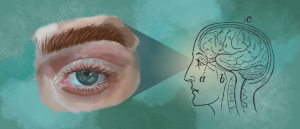
BioTechniques News
Beatrice Bowlby

Researchers from the University of California, Los Angeles (UCLA; CA, USA) have used a non-invasive imaging technique to visualize blood flow changes in the retina during migraines, revealing a possible observable marker for the condition.
Migraine is a common disorder that affects an estimated 10% of people worldwide, as of 2022. Despite its prevalence, it continues to be debilitating for some people, with patients often experiencing accompanying symptoms such as nausea, vomiting and extreme sensitivity to light and sound. For people with a type of migraine called, ‘migraine with aura’, warning symptoms can occur before or with the migraine. These warning symptoms include visual disturbances such as flashing lights or blind spots; individuals who have migraines without aura do not experience these symptoms.
In the current study, a team led by Katherine Podraza aimed to identify the underlying mechanisms of these visual disturbances by investigating changes in the structure and function of retinal blood vessels during and between migraines. They utilized a rapid imaging technique known as optical coherence tomography angiography (OCTA), which visualizes the retinal blood vessels with high spatial resolution in a clinical setting.
 The metabolic pathway underlying eye development
The metabolic pathway underlying eye development
Scientists discover the important role that aerobic glycolysis, the process where cells make lactate from glucose, plays in mammalian eye development.
The study included 37 migraine patients with aura symptoms, 30 migraine patients without aura symptoms and 20 control patients. The researchers identified a significant reduction in blood flow in the parafoveal region of the retina in patients with and without aura symptoms. However, migraine with aura patients exhibited lower blood flow to the foveal region of the retina in comparison to migraine without aura patients. Another interesting finding was that asymmetrical blood flow was correlated with the side of the head that patients, with and without aura, reported pain.
These findings indicate that changes in retinal blood flow could influence the visual symptoms that some migraine patients experience in addition to showing that vascular signatures, identified with OCTA, could represent biomarkers for migraine attacks, potentially aiding in the clinical treatment of the condition.
The post Why do some migraine patients experience visual symptoms? appeared first on BioTechniques.
Powered by WPeMatico
